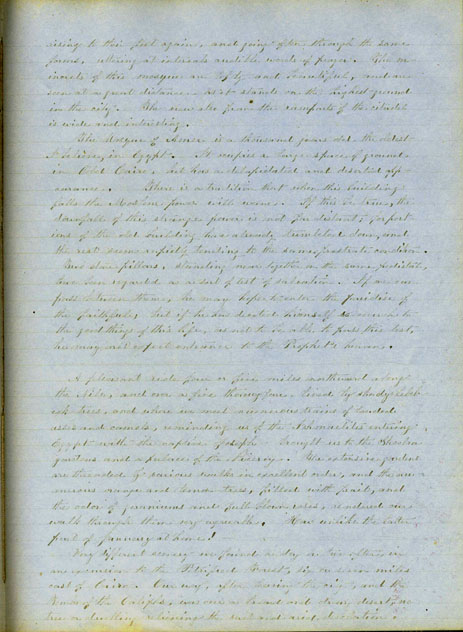Travel
Diary of Mrs. R.P. Eaton:
Europe,
Egypt, and Palestine, ca. 1857

The Mosque of Amer is a thousand years old, the oldest I believe, in Egypt. It occupies a large space of ground in Old Cairo, but has a dilapidated and deserted appearance. There is a tradition that when this building falls the Moslem power will wane. If this be true, the downfall of this strange power is not far distant; for portions of the old building have already tumbled down, and the rest seem rapidly tending to the same prostrate condition. Two stone pillars, standing near together on the same pedestal have been regarded as a sort of test of salvation. If one can pass between them, he may hope to enter the paradise of the faithful; but if he has devoted himself so much to the good things of this life, as not to be able to pass this test, he may not expect entrance to the Prophet’s heaven.
A pleasant ride four or five miles northward along the Nile, and over a fine thoroughfare, lined by shady trees, and where we meet numerous trains of loaded asses and camels, reminding us of the Ishmaelites entering Egypt with the captive Joseph—brought us to the Shoobra gardens and a palace of the Viceroy. The extensive gardens are threaded by various walks in excellent order, and the numerous orange and lemon trees, filled with fruit, and the odor of geraniums and full blown roses, rendered our walk through them very agreeable. How unlike the fruit of January at home!
Very different scenery we found a day or two after, in an excursion to the Petrified Forest, six or seven miles east of Cairo. Our way, after leaving the city, and the Tombs of Caliphs, was over a broad and dreary desert, no tree or dwelling relieving the vast and arid desolation.